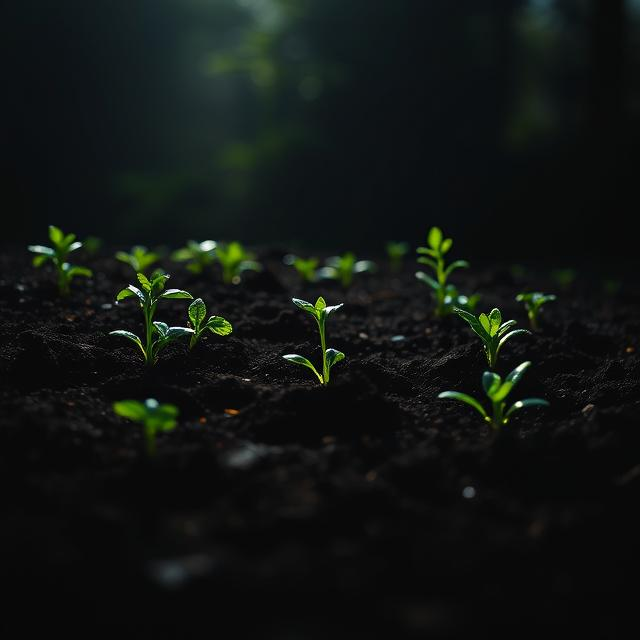Introduction
Soil is the cornerstone of agricultural productivity, biodiversity, and ecological balance. In a country like India, where nearly 58% of the population depends directly on agriculture for their livelihood, soil health becomes a critical issue. However, soil degradation—characterized by the decline in soil quality due to natural and anthropogenic factors—poses a severe threat to food security, rural incomes, and environmental sustainability. According to the Indian Council of Agricultural Research (ICAR), approximately 120.7 million hectares, or 36.7% of India’s total geographical area, is affected by various forms of land degradation.
This article delves into the processes leading to soil degradation in India, its regional dimensions, and sustainable land management practices that can help reverse or mitigate its impact.
Understanding Soil Degradation
What is Soil Degradation?
Soil degradation refers to the deterioration of the physical, chemical, and biological properties of soil, resulting in reduced fertility, water retention, and biodiversity. It can occur due to:
- Erosion (water and wind)
- Salinization and alkalization
- Loss of organic matter
- Nutrient depletion
- Soil compaction
- Chemical pollution and contamination
Causes and Processes of Soil Degradation in India
1. Water Erosion
Water erosion is the most widespread form of soil degradation in India, accounting for nearly 70% of the total degraded area. This includes sheet, rill, and gully erosion, mostly occurring in the Himalayan foothills, Eastern Ghats, and Western Ghats. Unplanned deforestation, overgrazing, and faulty farming on slopes accelerate runoff and the loss of topsoil.
Regional Example:
- Uttarakhand and Himachal Pradesh suffer from heavy rainfall and steep slopes, leading to severe soil erosion and landslides, especially during monsoon months.
2. Wind Erosion
In arid and semi-arid regions, wind erosion removes the fertile topsoil and causes desertification. This form of erosion is prevalent in western Rajasthan and parts of Gujarat.
Regional Example:
- Thar Desert, Rajasthan: Over-cultivation and overgrazing have exposed sandy soils to wind erosion, expanding desertified areas each year.
3. Salinization and Alkalization
Poor irrigation practices, especially in arid zones, have led to salinization and alkalization. These problems result from rising water tables and the accumulation of salts on the soil surface.
Regional Example:
- Punjab and Haryana: Due to over-irrigation using canal water without proper drainage, large tracts have become saline, reducing productivity.
4. Soil Nutrient Depletion
Excessive use of chemical fertilizers, monoculture, and lack of organic inputs have resulted in nutrient mining of soils. This depletes essential macro and micronutrients, making soils less fertile.
Regional Example:
- Gangetic Plains of Uttar Pradesh and Bihar: Continuous rice-wheat cultivation with minimal crop rotation or organic amendments has led to nutrient imbalance and soil fatigue.
5. Industrial Pollution and Waste Dumping
Disposal of untreated industrial effluents and municipal waste contaminates the soil with heavy metals and toxic chemicals, severely impacting soil health.
Regional Example:
- Tanneries in Kanpur (Uttar Pradesh): The discharge of chromium-rich waste has degraded large areas of surrounding farmland, making them unsuitable for cultivation.
6. Urbanization and Land-Use Change
Urban sprawl, construction, and mining have resulted in the loss of arable land and compaction of soil layers, affecting infiltration and soil respiration.
Regional Example:
- Bangalore and Hyderabad Peripheries: Rapid real estate development has consumed agricultural land, leading to compaction and sealing of productive soil.
Consequences of Soil Degradation
- Reduced Agricultural Productivity: Decline in crop yields affects food security and farmer incomes.
- Loss of Biodiversity: Degraded soils cannot support a diverse range of flora and fauna.
- Water Scarcity: Eroded soils reduce water-holding capacity and groundwater recharge.
- Climate Change: Loss of organic matter and vegetation contributes to greenhouse gas emissions.
- Increased Rural Poverty: Soil degradation undermines the livelihoods of small and marginal farmers.
Sustainable Land Management (SLM) Practices
Sustainable Land Management refers to the adoption of land-use practices that integrate ecological, economic, and social objectives. The goal is to prevent degradation while restoring the health and productivity of the land.
1. Agroforestry
Integrating trees with crops and livestock systems improves soil fertility, reduces erosion, and enhances biodiversity.
Regional Example:
- Bundelkhand region (Madhya Pradesh and Uttar Pradesh): Agroforestry with species like Prosopis juliflora and Acacia nilotica has helped rehabilitate degraded lands and improve livelihoods.
2. Contour Farming and Terracing
These methods reduce runoff and soil erosion on slopes by capturing rainwater and slowing its flow.
Regional Example:
- North-Eastern Hills: Terraced paddy cultivation and contour bunding have proven effective in Nagaland and Meghalaya.
3. Use of Organic Inputs
Applying compost, green manure, and biofertilizers helps restore soil microbial life and nutrient content, reducing dependence on chemical fertilizers.
Regional Example:
- Sikkim (India’s first organic state): Organic farming practices have significantly improved soil health and long-term productivity.
4. Conservation Tillage (Zero Tillage)
Minimal disturbance of the soil helps preserve structure, reduce compaction, and retain organic matter.
Regional Example:
- Punjab and Haryana: Zero-tillage in wheat following rice harvests has improved soil structure and water efficiency.
5. Reclamation of Saline and Alkaline Soils
Using gypsum or acid-forming fertilizers, along with proper drainage systems, helps reclaim saline soils.
Regional Example:
- Indira Gandhi Canal Command Area (Rajasthan): Gypsum application and sub-surface drainage have helped convert previously saline soils into productive croplands.
6. Integrated Nutrient Management (INM)
Combining chemical fertilizers with organic manures and biofertilizers ensures balanced nutrient application and minimizes environmental harm.
Regional Example:
- Tamil Nadu and Karnataka: INM in rice and sugarcane cultivation has shown increased yield and soil resilience.
7. Watershed Management
Watershed development includes soil and water conservation, reforestation, and livelihood promotion, particularly in rainfed areas.
Regional Example:
- Sujala Watershed Project (Karnataka): Community-based watershed planning has improved groundwater recharge, reduced erosion, and enhanced agricultural productivity.
8. Controlled Grazing
Managing livestock movement and pasture regrowth reduces soil compaction and maintains vegetative cover.
Regional Example:
- Gujarat’s Banni Grasslands: Community-led grazing management has rejuvenated degraded rangelands.
9. Bio-remediation of Polluted Soils
Phytoremediation using specific plant species can absorb and detoxify pollutants in contaminated soils.
Regional Example:
- Industrial belts of Maharashtra: Use of sunflower and mustard for heavy metal absorption from polluted soils is gaining traction.
Policy and Institutional Measures

National-Level Initiatives
- Soil Health Card Scheme: Provides farmers with customized fertilizer recommendations based on soil testing.
- National Mission for Sustainable Agriculture (NMSA): Promotes climate-resilient and resource-efficient practices.
- Watershed Development Component of PMKSY: Focuses on water harvesting, afforestation, and soil conservation.
- National Afforestation Programme (NAP): Aims at eco-restoration of degraded forest lands.
- Compensatory Afforestation Fund Act (CAF Act): Encourages restoration of forest ecosystems through afforestation.
Role of Panchayati Raj Institutions and Local Communities
Participatory approaches involving local stakeholders, women’s groups, and NGOs ensure long-term adoption and monitoring of sustainable practices. Community ownership fosters accountability and adaptability in land management decisions.
Way Forward: Integrated Approach to Soil Health
Combating soil degradation in India requires a holistic strategy that combines science, policy, and community action:
- Promote awareness through soil literacy campaigns.
- Revise land use policies to prevent conversion of agricultural land.
- Incentivize organic and regenerative agriculture through subsidies and market linkages.
- Enhance research and data collection on soil health and degradation.
- Foster public-private partnerships for investment in soil restoration technologies.
Conclusion
India’s struggle with soil degradation is a reflection of broader challenges in managing natural resources amid growing population pressure and climate stress. However, the tide can be turned with timely interventions that blend traditional wisdom with modern techniques. Sustainable land management is not merely an environmental necessity but a socio-economic imperative that directly impacts the livelihoods of millions. By investing in healthy soils, India can ensure food security, rural prosperity, and ecological stability for future generations.




